Information is a strategic resource—less understood but no less important to national security than political, military, and economic power. In the information age, influence and power go to those who can disseminate credible information in ways that will mobilize publics to support interests, goals, and objectives. What is required is a coherent approach as to how we think about managed information dissemination (my emphasis) and the investments that are required for its more effective use by America’s diplomats and military leaders.
—Department of Defense task force on strategic communication.
Around Thanksgiving the Department of Defense released a report entitled, Report of the Defense Science Board Task Force on Strategic Communication. My presentation will consist of writing a close and critical review of the strategic communications report. And although its relevance to the class lies mainly in one part of the report, its clear representation of how Islamic peoples tend to perceive the United States, I will present the report as a whole . I will address the report in five parts: the introduction, covering the origins of the report; the problem, covering the way the report presents negative perceptions as the problem that must be addressed; the Cold War parallel, covering the paradigm that the report offers as a way of understanding the situation; the solution, covering the report’s strategic communications program as the solution it proposes; and the conclusion, where I will ask readers to draw their own conclusions by asking a few questions. Ultimately, I will ask readers to reflect on how the meaning of democracy and justice might be affected when communicated strategically.
Part One: Origin and Introduction
The strategic communication report was written in response to a memorandum sent to William Schneider Jr., Chairman of the Defense Science Board, by Paul Wolfowitz, Deputy Secretary of Defense. This initial memorandum noted that, “our military expeditions to Afghanistan and Iraq are unlikely to be the last such excursions in the global war on terrorism,” and asked, “Are there techniques and technologies which can identify who will or will not present an insurgency threat in the post-hostilities phase? Can something be done in the pre-hostility phase which will minimize or even eliminate post-hostility phase insurgency and terrorism problems” (88)? In response, the Task Force, after meeting with the National Security Council, the White House Office of Global Communications, the Department of State, the Broadcast Board of Governors, as well as representatives of the academic and private sectors, decided that there is a great need of a new strategic communication policy, which, “must be more comprehensive, substantive, locally agile and below the radar than public diplomacy today” (51). Explicitly, the Task Force summarized seven recommendations, which I have attached verbatim as an appendix. The report’s conclusion however can be summarized in two sentences: “Sophisticated strategic communications can set the agenda and create a context that enhances the achievement of political, economic, and military objectives. Over time, they may shape foreign perceptions in ways that support America’s interests” (93).
Part Two: Perceptions and Global Transparency
The report explains that the main problem facing the US in the future is its negative image around the world. For example, the report cites falling favorable ratings toward the US generally in many key countries from April 2002 to June 2002: Morocco, fell from 38 to 11; Saudi Arabia, fell from 12 to 2; Jordon, fell from 34 to 15; Lebanon, fell from 26 to 20; Egypt, fell from 15 to 2. But more importantly, when those populations were asked specifics about the US the figures show that it is not American values that are despised but American policies. For example, the people of Morocco, when asked about the people of the US, gave a 59% favorable rating, but when asked about the Iraq Policy they gave a 1% favorable rating. Generally, the report sites that ratings toward science, democracy, people, movies, products, and education are much much higher across the countries polled than the ratings toward US’s Arab, Palestinian, Terrorism, and Iraq policies, which tended to receive rating in the low single digits (see tables on pages 44 and 45 of the report). More troubling still, however, the report notes, is the great divide that separates the perceptions of Americans toward themselves from those of others toward Americans. That is, while:
Americans are convinced that the U.S. is a benevolent “superpower” that elevates values emphasizing freedom and prosperity as the core of its own national interest… [and that] “U.S. values” are in reality “world values”….The world of Islam—by overwhelming majorities at this time—sees…American policies as inimical to their values, American rhetoric about freedom and democracy as hypocritical, and American actions as deeply threatening. (45)
Moreover, the report goes on to note that the, “negative opinion of the U.S. has not yet bottomed-out, but is in fact continuing to move dynamically” downward. The cause of this trend is identified in the report as the fact that, “the dramatic narrative since 9/11 has essentially borne out the entire radical Islamist bill of particulars” (40). And the problem that it raises is the fact that, “American actions and the flow of events have elevated the authority of the Jihadi insurgents and tended to ratify their legitimacy among Muslims” (40). Perceptions aside, the report explains that:
If there is one overarching goal they [Muslims] share, it is the overthrow of what Islamists call the “apostate” regimes: the tyrannies of Egypt, Saudi Arabia, Pakistan, Jordan, and the Gulf states. They are the main target of the broader Islamist movement, as well as the actual fighter groups. The United States finds itself in the strategically awkward—and potentially dangerous—situation of being the longstanding prop and alliance partner of these authoritative regimes. Without the U.S. these regimes could not survive. Thus the U.S. has strongly taken sides in a desperate struggle that is both broadly cast for all Muslims and country-specific. (35)
Ironically, the report never brings the “actions” or “policies” that so severely tarnish the U.S.’s image into question. Instead of exploring why future Muslim “Regimes based on consent [a.k.a., Democracies]” would oppose U.S. policies (18), the report focuses on the new phenomena of “global transparency” as the underlying cause of growing Muslim resentment. Indeed, the report notes that, “there is consensus that America’s power to persuade is in a state of crisis…driven by [global transparency, i.e.,] new media and low cost technologies, [which] shape the strategic landscape” (14). The low cost technologies in question are cell phones, digital cameras, the internet, satellite TV, and so on. The problem is that, “these technologies have consequences… Journalists rely less on ‘institutionally based news’ (i.e. official sources, press conferences). Publics (i.e., NGOs, image activists, soldiers with digital cameras can drive perceptions and policies with pictures and stories” (19). That is, “Greater amounts of real time information and decreasing costs are severely challenging state censors and changing the way governments interact with their citizens” (18). Because of global transparency, the report argues that, “the U.S. Government needs a strategic communication capability that is planned, directed, coordinated, funded, and conducted in ways that support the nation’s interests” (11).
Of course the need for the rulers of democratic societies to be able to shape the perceptions of their constituents is nothing new. Consider the media experts. Noam Chomsky quotes Edward Bernays, Walter Lippmann, Harold Lasswell, and Reinhold Niebuhr, some of the most powerful figures in public relations. Chomsky begins with what Bernays wrote in the Annals of the American Academy of Political and Social Science:
“The very essence of the democratic process” is “the freedom to persuade and suggest,” what [Bernays] calls “the engineering of consent.” “A leader,” he continues, “frequently cannot wait for the people to arrive at even general understanding… Democratic leaders must play their part in…engineering…consent to socially constructive goals and values,” applying “scientific principles and tried practices to the task of getting people to support ideas and programs.”….Similar ideas are standard across the political spectrum…. The dean of U.S. journalists, Walter Lippmann, described a “revolution” in “the practice of democracy” as “the manufacture of consent” has become “a self-conscious art and a regular organ of popular government” …. later, Harold Lasswell explained in the Encyclopaedia of the Social Sciences that we should not succumb to “democratic dogmatisms about men being the best judges of their own interests.” ….When social arrangements deny [the rulers] the requisite force to compel obedience, it is necessary to turn to “a whole new technique of control, largely through propaganda” because of the “ignorance and superstition [of]…the masses.” In the same year, Reinhold Niebuhr argued that “rationality belongs to the cool observers,” while “the proletarian” follows not reason but faith, based upon a crucial element of “necessary illusion.” …Niebuhr urged that those he addressed…recognize “the stupidity of the average man” and provide the “emotionally potent oversimplification” required to keep the proletarian on course to create a new society. (Necessary Illusions 18).
Knowing the history of the public relations industry not only carries us a long way to understanding media, but it also gives us some context for understanding the statements of some political experts; for example, Samuel Huntington’s seemingly bizarre advice in American Politics (1981): “The architects of power in the United States must create a force that can be felt but not seen. Power remains strong when it remains in the dark; exposed to the sunlight it begins to evaporate.” And while pointing out the function of the so-called communist threat (today he would call it the terrorist threat), Huntington adds, “You may have to sell [intervention or other military action] in such a way as to create the mis-impression that it is the Soviet Union (read Al-Quaeda) that you are fighting. That is what the United States has been doing ever since the Truman Doctrine” (Profit Over People 140). As we will see the difference between “public relations” and “strategic communications” is really a matter of degree and not one of kind.
Still, when asked, “Why can’t CNN, Fox, or MSNBC do it?” (11), the authors of the report replied, “But commercial media are selective in ways that serve news and business interests first. And few politicians, corporations, or advocacy groups are content to leave their political campaigns, business objectives, and policy agenda to improvisation or the media” (11). Later in the report the authors make the same point about the limitations of “private media” but add that:
At the same time, [private] media increasingly will carry the statements of America’s leaders, when and if they have something of consequence to say to foreign publics, without the need for Government-sponsored channels. Moreover, there are moments of crisis and issues of long-term importance to which only Government can speak with full authority. Information—not as “spin,” but as policy—is not simply a rhetorical flourish in which solutions to crisis are presented; it is an integral part of the solution itself. (94)
Thus the new program for strategic communication will include both private and government channels.
Also, before moving on we should take a closer look at the commercial news media so as to understand exactly why it is not good enough to continue doing the job of “manufacturing consent.”
First of all it is important to note the concentration of the media in only a few hands. In 1982, 50 media firms controlled almost all forms of the mass media. In 1990, that number had gone down to 23 firms. In 2002 we were down to 9—Disney, AOL Time Warner, Viacom, News Corporation, Bertelsmann, General Electric, Sony, AT&T-Liberty Media, and Vivendi Universal. Today, only 6 transnational conglomerates control and own almost everything. (Manufacturing Consent xiii).
It is also important to note that traditionally the function of a free news media has been that of “watch dog.” Its role in a democracy is to keep our leaders honest by being free to report the news unfiltered by the demands of the powerful. But this role is in direct conflict with the media’s status as a group of for-profit organizations. That is to say, despite the mythology of the reporter as watch dog, “the major media—particularly, the elite media that set the agenda that others generally follow—are corporations ‘selling’ privileged audiences to other businesses. It would hardly come as a surprise if the picture of the world they present were to reflect the perspectives and interests of the sellers, the buyers, and the product” (Necessary Illusions 8). For those interested in a more precise analysis of how the media shape our world view I suggest reading Edward S. Herman and Noam Chomsky’s monumental work on the subject, Manufacturing Consent: The Political Economy of the Mass Media. But for the purpose of providing a little background on how information is managed in a free society, it suffices to briefly mention the five filters that Herman and Chomsky determined that information must pass through.
• Only the very rich can set up and run major news outlets.
• Advertising revenue determines the success of the news producers.
• “The source of much news is determined by government and corporate organizations, which may have many thousand of employees dedicated to providing appropriate material” (Smith 200).
• The ability of corporate-supported Think Tanks and organizations to produce “flak,” the negative and costly reactions of the populace against the media for being too “liberal.”
• The ideological filter, namely, the ability to exclude views by labeling them communist—or in today’s world—sympathetic to terrorists.
We need to keep in mind how the information gets filtered and disseminated now, if we are to really understand how far reaching the proposals offered by this report on strategic communication really are.
Part Three: The Cold War and the Global War on Terrorism as Paradigms
There have been many comparisons between the Cold War and the Global War on Terrorism. But while the report admits that, “the Global War on Terrorism replaced the Cold War as a national security meta narrative” (17), because like with the Cold War meta narrative, or paradigm, “Governments, media, and publics use the terrorism frame for cognitive, evaluative, and communication purposes” (17), it warns that we need to be careful in making too close of an analogy between the two. That is although the terrorist frame has uses similar to that of the Cold War—for example, “for political leaders, it is a way to link disparate event; identify priorities, friends, enemies, victims, and blame; and shape simple coherent messages” (17)—it also has its limitations.
There are two main differences between the two paradigms, the report notes. The first is that:
In terms of strategic communication, the Cold War emphasized [an] acceptance of authoritarian regimes as long as they were anti-communist. This could be glossed over in our message of freedom and democracy as long as it was the main adversary only that truly mattered. Today, however, the perception of intimate U.S. support of tyrannies in the Muslim World is perhaps the critical vulnerability in American strategy. It strongly undercuts our message, while strongly promoting that of the enemy. (36)
The second great difference between then and now lies in:
The information age implications for old-style info-agency organization. That is, the Cold War emphasized [the] dissemination of information to huddled masses yearning to be free. Today…there is no yearning-to-be-liberated-by-the-U.S. groundswell among Muslim societies—except to be liberated perhaps from what they see as apostate tyrannies that the U.S. so determinedly promotes and defends (36).
This dramatic change of heart toward the free flow of information should give us pause.
In fact, what I suspected on page 36 of the report, namely, that a history-making and future-shaping reversal has accured, was confirmed only three pages later:
The U.S. has always operated from the proposition that in the “war of ideas” and the competition of ideologies, one form of government and society functions best when the bright light of free-flowing information is pulsing—among free and democratic societies—while another—the tyrannical and fascistic—functions with difficulty, if at all, under those circumstances. Yet, the paradox today is that our enemy is thriving in an environment of free and open information flows. Thus our challenge is to transcend Cold War clichés, to seek out new and creative responses—especially in the realm of strategic communication—and to do so most urgently, because at this moment it is the enemy that has the advantage. (39)
In other words, freedom of the press, a key item in our anti-communist meta narrative has been transformed into a “cliché” that needs to be “transcended” under our new anti-terrorist meta narrative. This change in our attitude toward a free press is the result of a change in stated purpose. We are no longer trying to liberate; we are trying to incorporate. That is, “in stark contrast to the Cold War, the United States today is not seeking to contain a threatening state/empire, but rather seeking to convert a broad movement within Islamic civilization to accept the value structure of Western Modernity—an agenda hidden within the official rubric of a ‘War on Terrorism’” (36).
All that having been said, there still must be more “hidden within the official rubric” than the simple “converting” Muslims to Western values, because as the report’s own polls demonstrated—and as it pointed out—Western values are not the problem driving the anger against the U.S., the policies are.
Part Four: Strategic Communications and the Leveraging of the Private Sector
The core of the new strategic communication proposal come in a chapter of the report entitled “Leveraging the Private Sector.” The chapter begins by stating that:
We must give up the assumed advantages of the ‘incumbent’ and trade them for the real edge of the ‘insurgent’ in the information age. Building on an insurgent global strategic communication culture that borrows the most effective private sector marketing and political campaign techniques will be at the core of rebuilding and reinventing the way the U.S. listens, engages, and communicates with the world. (48)
It goes on to clarify that the information industry’s “modus operandi” will be: “mobile and agile” like an insurgent. That is, first it must be understood that, “the U.S. must adopt the strategies and tactics of the insurgent, not the incumbent: waging a proactive, bold and effective U.S. strategic communication effort” (50). The United States must, “mobilized greater private sector initiatives that contain built-in agility, credibility and even deniability that will be missing from government-sponsored initiatives” (52).
However, not only must we leverage the private sector because of built in credibility and deniability, etc., but we must also, according to the report, model our communication efforts on political campaigns, because “typically, a political campaign will do virtually anything to move the undecided before Election Day…. Campaigns will buy any vote they can. They’ll run negative advertising. They’ll rent fleets of vans to drive hard supporters to the polls” (55). That is, from the political side we have learned that, “information saturation means attention, not information, becomes a scarce resource” (20). In other words:
Asymmetrical credibility matters. What’s around information is critical. Reputations count. Brands are important. Editors, filters, and cue givers are influential. Fifty years ago political struggles were about the ability to control and transmit scarce information. Today, political struggles are about the creation and destruction of credibility. (20)
From the private economic sector the U.S. must learn to market and sell the “U.S Brand,” where, “in this sense, the word ‘brand’ simply means a conceptual system to guide and navigate our constituents to the meaning and essence of the U.S…” (53). Indeed, the report tells us exactly what the U.S. brand is supposed to mean:
• “Respect of human dignity and individual rights”
• “Individual education and economic opportunity”
• “Personal freedom, safety and mobility”
However, notably missing is the protection of the free flow of information and ideas that were so much a part of the Cold War meaning of “the U.S. brand.”
Moving on, the way that the U.S. is to sell its brand to the publics both foreign and domestic is through the use and development of “ethnographic, psychographic, demographic, behavioral and tracking research” (56). That is, “strategic communication requires a sophisticated method that maps perceptions and influence networks” (2).
Furthermore, the U.S. must produce products that sell the new U.S. brand: “Examples of products would be a children’s TV series (Arabic Sesame Street); video and interactive games; support for the distribution and production of select foreign films; and web communications including BLOGSs, chat rooms, and electronic journals” (68).
And the time scale for all that is proposed? The report suggests that, “we should expect to see some progress within a year but we are dealing with at least a decade to have a significant impact” (5).
Part Five: Justice and “strategic” democracy
I have passed over much technical detail. My hopes in writing this paper is that others will be intrigued enough to read the report on strategic communication themselves. I want to encourage what might soon be the lost art of drawing one’s own conclusions. Here I only want to ask my reader the question that I promised at the beginning. What is the strategic meaning of democracy and justice? Can a free society survive such a tight ideological control over how and what one perceives? Is it impossible that America could be fundamentally and dangerously wrong about how it sees itself? And how does it see itself, i.e., would Americans still feel that their values are the world’s values if they knew that they had been programmed to feel that way? How do the writers of the American jingle about “human dignity” etc, really see themselves and America?
The Report of the Defense Science Board Task Force on Strategic Communication can be found at: http://www.acq.osd.mil/dsb/reports/2004-09-strategic-communication.pdf
Works Cited
Chomsky, Noam. Year 501: The Conquest Continues. Boston: South End, 1993.
---. Deterring Democracy. NewYork: Hill and Wang, 1997.
---. Necessary Illusions: Thought Control in Democratic Societies. Boston: South End, 1989.
---. Profit Over People: Neoliberalism and Global Order. New York: Seven Stories, 1999.
---. Understanding Power: The Indispensible Chomsky. Eds. Peter R. Mitchell and John Schoeffel. New York: The New Press, 2002.
Herman, Edward S. and Noam Chomsky. Manufacturing Concent: The Political Econmy of the Mass Media. New York: Pantheon, 2002.
Subscribe to:
Post Comments (Atom)






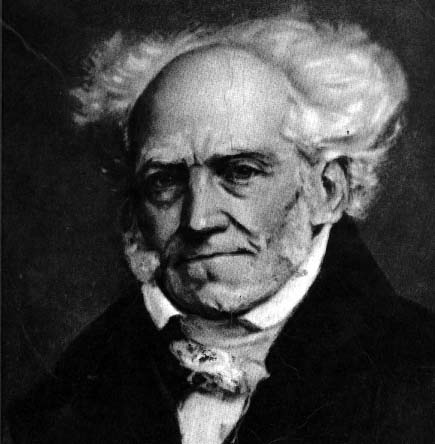



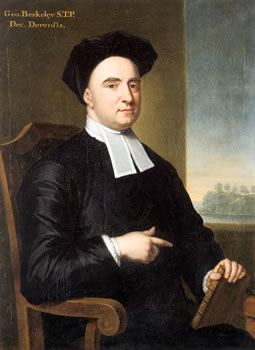















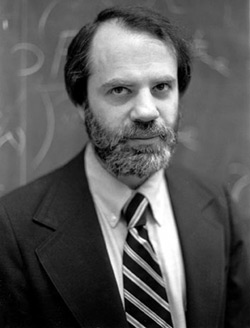


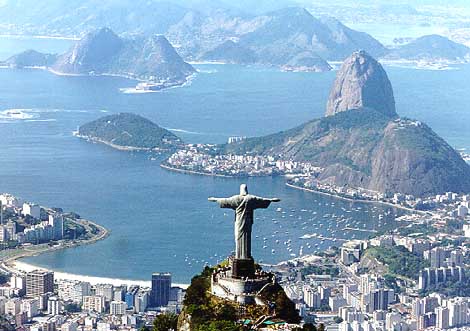








































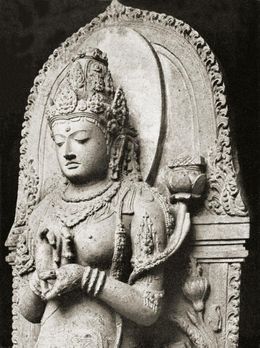
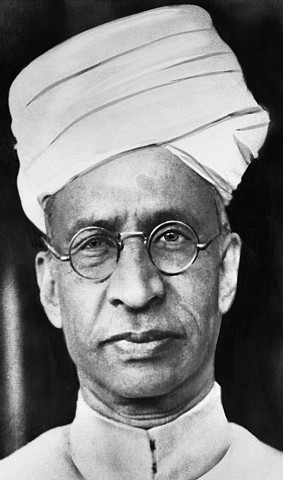
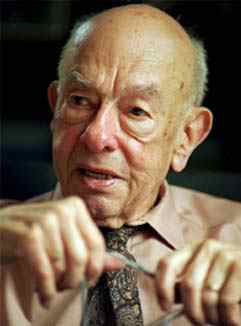





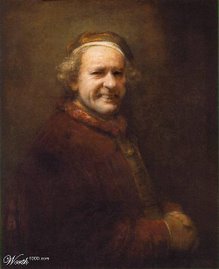







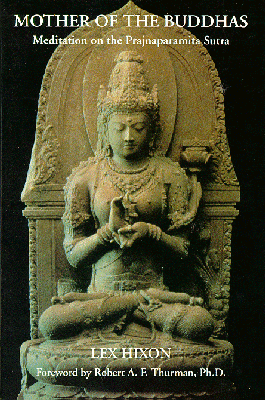

No comments:
Post a Comment